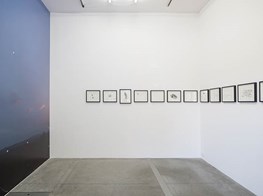Night/Plovdiv 2016: Two nights in a future European Capital of Culture
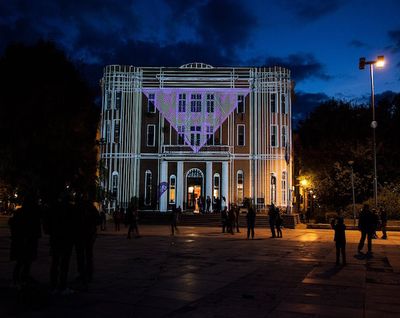
Night/Plovdiv is an annual art festival that takes place in Plovdiv, Bulgaria’s second largest city. It involves galleries, museums and other cultural spaces opening their doors over the witching hours, as concerts, performances, parties and other happenings take place throughout the city. Vesselina and Katrin Sarieva, also the founders of Plovdiv based gallery SARIEV Contemporary, launched the festival in 2005 with 20 events that were visited by some 3000 people. Eleven years on, the event has become a much loved affair in Bulgaria; its 2016 edition, held on 23 and 24 September 2016, presented 141 events in around 70 locations reflecting this increasing popularity.
This year’s extensive (and exhaustive) programme covered an impressive range of disciplines—from cinema, theatre, and literature, to dance, contemporary art, and new technologies—divided into five main programs: ‘Museums and Galleries’, ‘Culture and Club’, ‘City and Public Spaces’, ‘Little Night’, and ‘Open Arts’.
Exhibitions included Nature (23 September – 28 October 2016): Nedko Solakov’s solo show at SARIEV Contemporary, in which the artist presents the documentation of a hike in the woods around Boriki village in Bulgaria’s Gabrovo region. This hike, 147.45 kilometres in total, is documented by 12 drawings Solakov completed en plein air, each numbered to correspond to a numbered dot located on a large-scale photograph of the Balkan range taken by Dimitar Solakov, which covers an entire wall of the gallery. Each sketch offers an affective response to the landscape, as filtered through Solakov’s eyes, with notes scrawled over each sketch in Bulgarian—the first time Solakov has produced work in which characteristic annotations have not been written in English. In one, Solakov sketches a reservoir, annotated with the notes, ‘Rusty remains of socialism’, ‘Warning, entrance forbidden’, ‘Warning, shooting without warning’, and ‘Democratic detour’. In another, he records the historic tomb of a Turkish saint, ‘honoured by both Christians and Muslims’, that can be found right above the village of Solakov’s grandparents, in Ryahovtsite.

Solakov’s show was an ideal way to enter into the sprawling map of Night/Plovdiv, which featured locations throughout the city. These included sites of interest highlighted by the Alternative Map of Plovdiv, which was launched in print in 2013, and which offered a second edition as part of Night/Plovdiv 2016, with locations such as ‘The Tobacco Warehouses’, ‘The Kapana Quarter’, ‘Bauhaus under the Hills’, ‘Communist-Era Architecture’, and ‘The Mahala’ (Hadji Hassan Quarter), offering an extensive view of what is one of the oldest inhabited cities in the world. Indeed, Plovdiv is located at a true crossroads: in the centre of Bulgaria, which is bordered by Turkey, Greece, Romania, Serbia and Macedonia. It is a central city for empires that have risen and fallen in the Balkan region, from the Greek, Macedonian, and Roman, to the Bulgarian Empire, which dominated the Balkans in the Middle Ages, before the Ottomans took over, and later, the Soviets, to whom Bulgaria’s Stalinist government claimed allegiance.
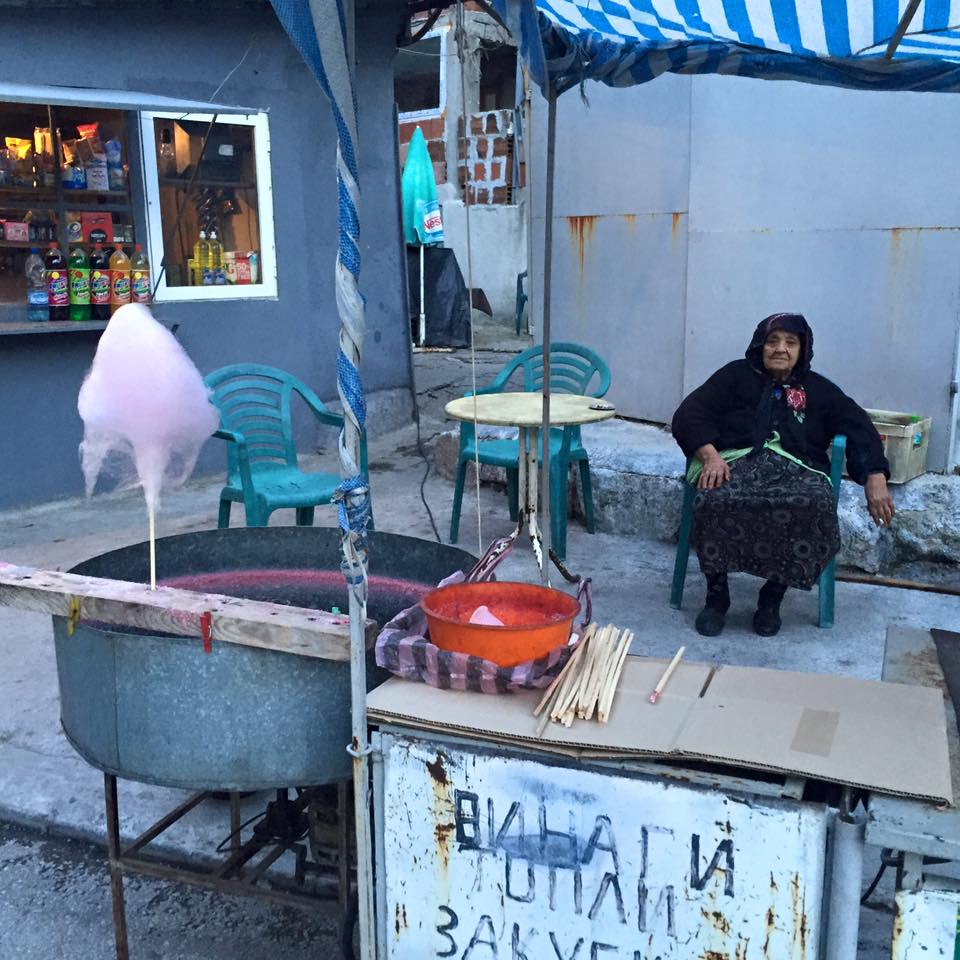
Such a vast history is represented in every facet of the urban space. There is the remains of Hadrian’s stadium of Philippopolis, built in the 2nd century AD and a magnificent theatre built during the time of Emperor Trajan. Then there is the 14th century Dzhumaya Mosque—one of the oldest and largest Ottoman mosques in the Balkans—and the impressive soviet monument known as the Brotherly Mound, unveiled in 1974 and dedicated to soldiers who fought in Bulgaria’s liberation from Ottoman rule during the Balkan wars, and the First and the Second World Wars.
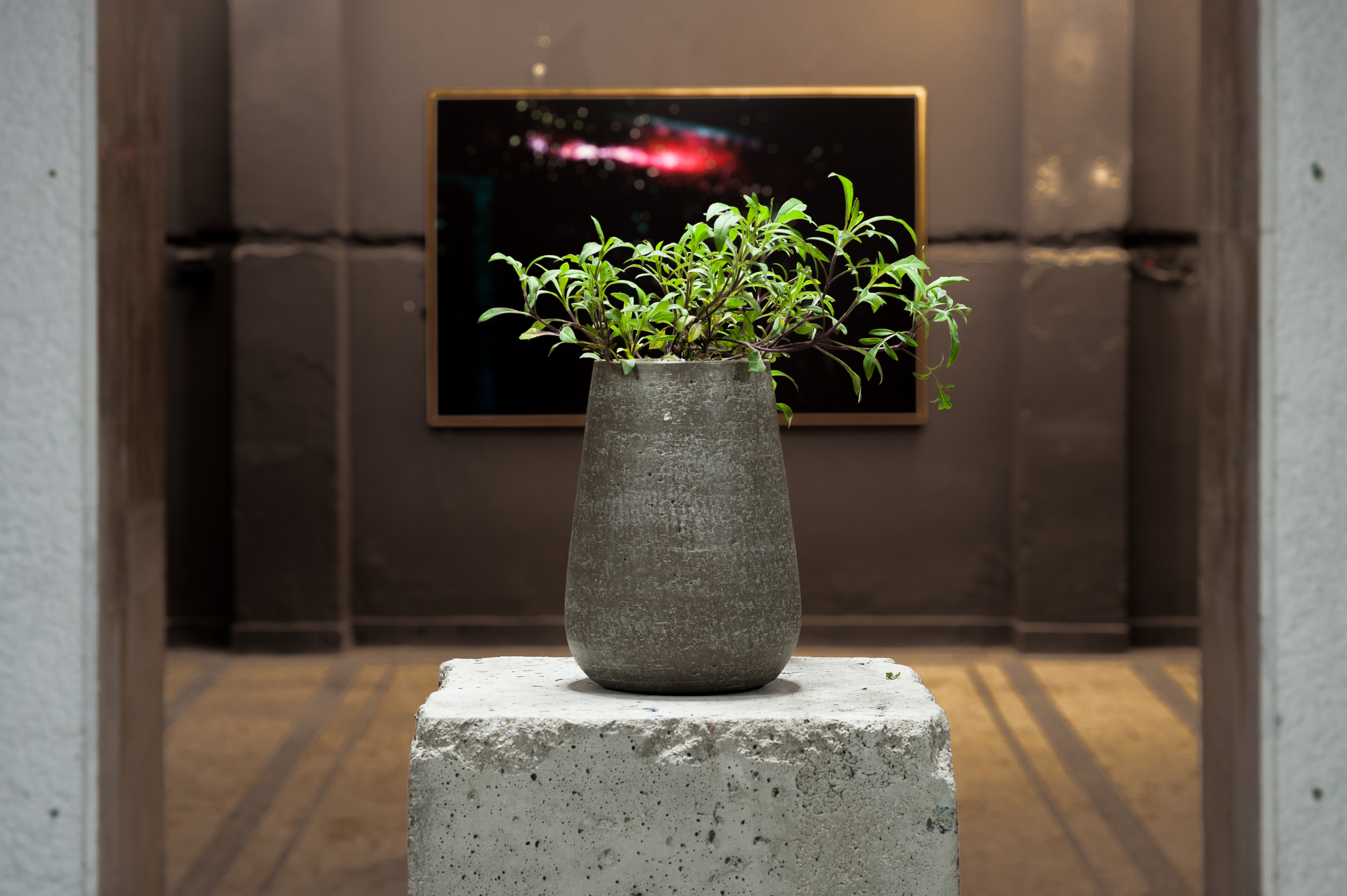
Some of these historical buildings were included in Night/Plovdiv’s programme, including the Kino Kosmos—a soviet-style cinema designed by Lyubomir Bonev and Lyubomir Shinkov, which was opened in 1964 and closed in 1999. Here, artist Maxime Bondu presented results from research conducted into the cinema’s history in 2015, as curated by Emile Ouroumov, creating works based on found objects from within the cinema space. These included a constellation made from broken tube lights taken from the original Kino Kosmos sign, as well as a wall of images featuring film stills of the movies shown when the cinema was in operation, from Desperado to Evita. Other locations included the 5th/6th century Bishop Basilica, which participated in Night/Plovdiv for the first time with a sightseeing tour and a meeting with archaeologists who introduced the 2000 square metre mosaics currently being uncovered and restored at the site.
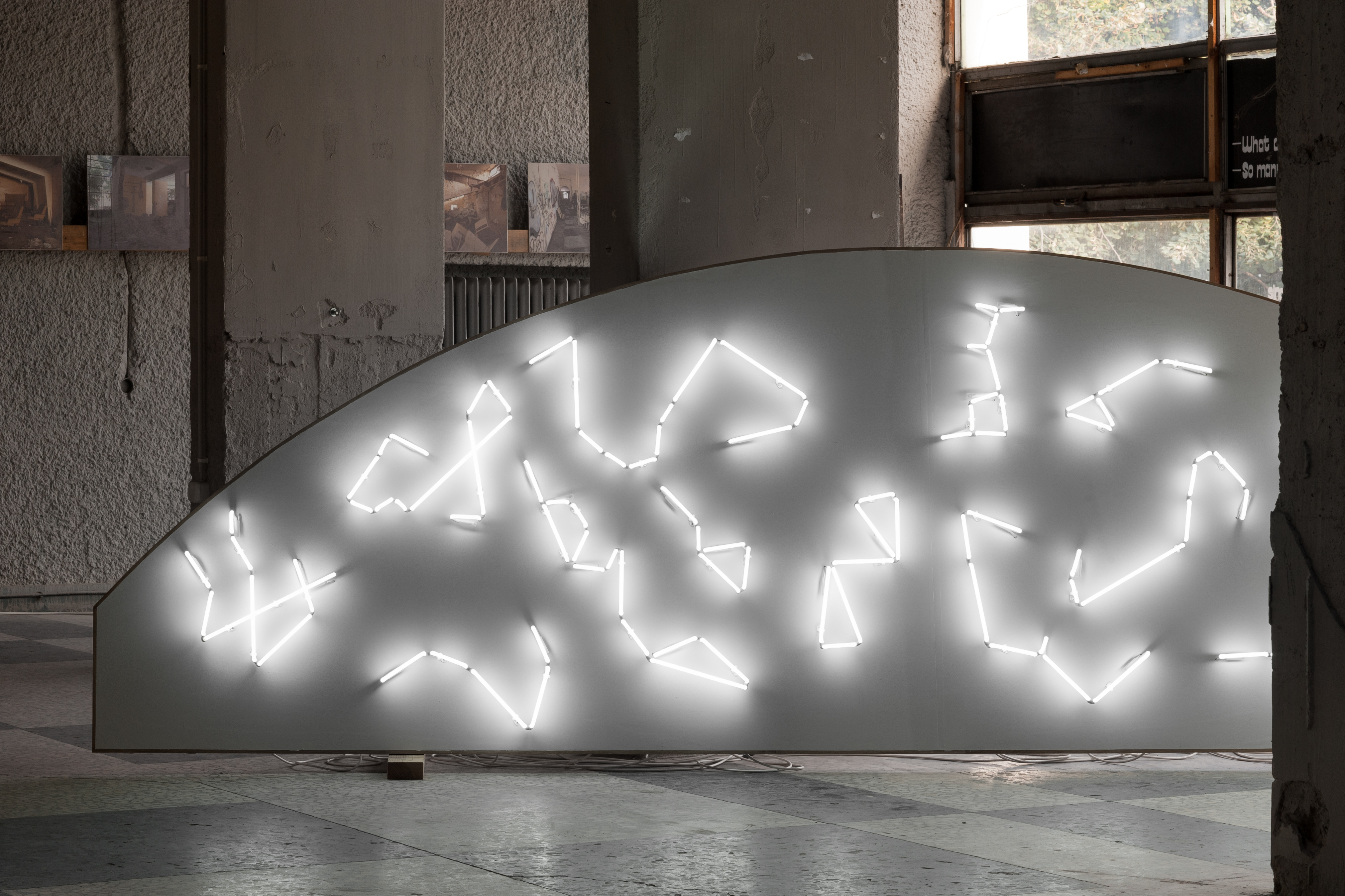
Over at the Old Town, the City Art Gallery presented a series of exhibitions featuring both permanent and temporary exhibitions by artists from various generations and places, including Dimiter Buyukliiski-Mitchy, Stela Vasileva, and Ivan Kiuranov, in perfectly preserved Bulgarian revival buildings, including the remarkable former 19th century Baroque home of Plovdiv merchant, Argir Hristov Kuyumdzhioglu, which is now the Regional Ethnographic Museum. These included a collection of modern Mexican graphic art acquired in 1981 (including the work of revolutionary José Guadalupe Posada) presented at the Mexican Art House alongside paintings by Dean Yanev and sculptures by Milena Bochukova.
Beyond the Old Town was a series of more contemporary offerings, with the wildly popular Drag Queen Cabaret performance at Point Blank Gallery in the flourishing Kapana neighbourhood, an outdoor screening programme of experimental and adult short films by graduates of the American Film Institute curated by Maya Vitkova, as well as the installation of a shipping container encased with a metallic, reflective surface designed and constructed in collaboration with Plovdiv architects Atelie Duo as the moveable home of the Austrian Culture Pavilion—FLUCA. The container served as the platform for interdisciplinary projects, performances, screenings and concerts that took place within the framework of Get Involved: Focus Direct Urbanism, curated by Ursula Maria Probst as part of Night/Plovdiv for which the container acted as a mobile intervention by artist group tat ort (Alexandra Berlinger, Wolfgang Fiel).
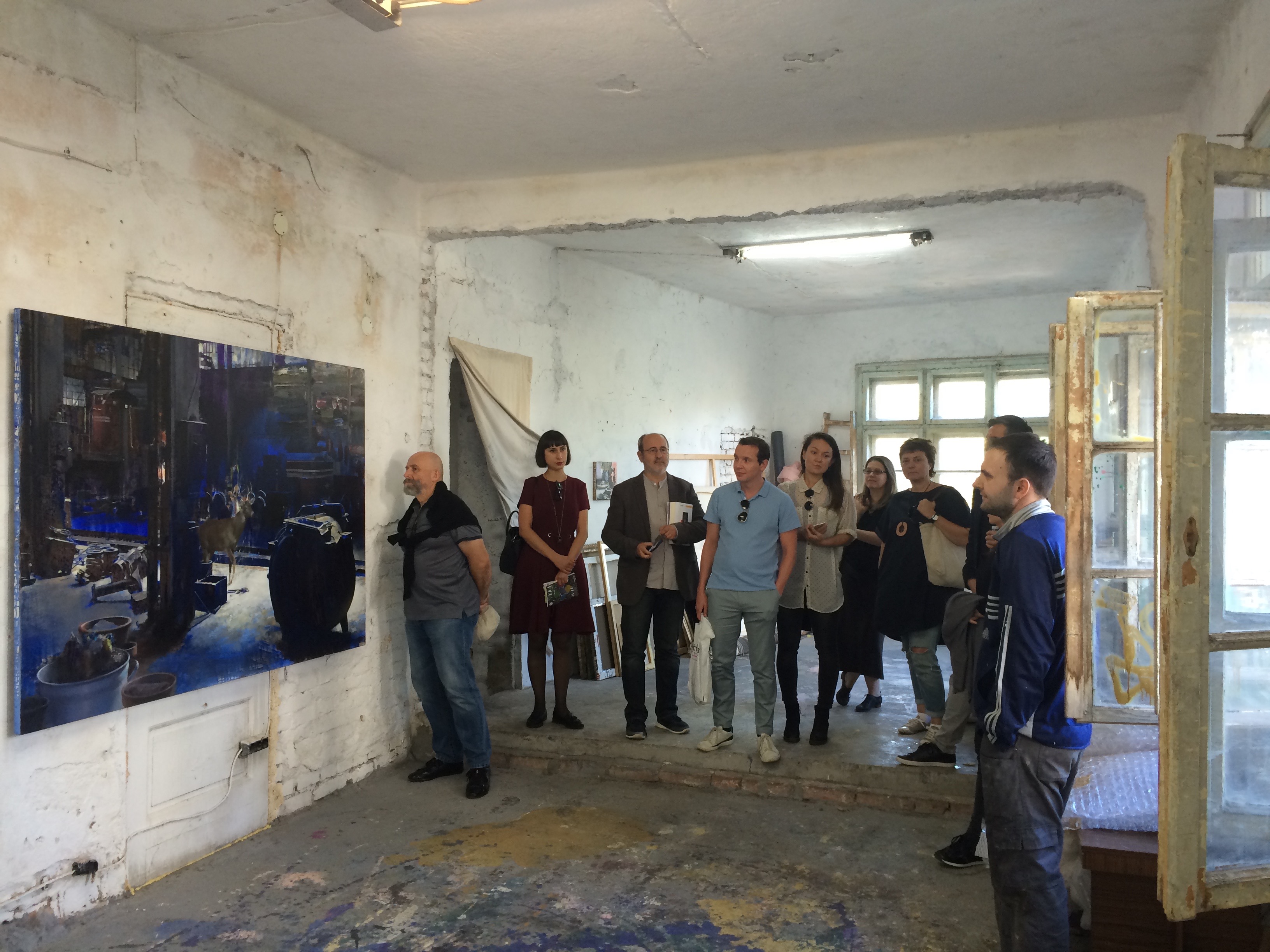
At the art news café, a version of an archival exhibition curated by Vladia Mihaylova originally shown in the Sofia City Art Gallery was presented especially for Night/Plovdiv. Titled 90s. The Beginning of the Myth, the exhibition focused on the 1990s: a decade that followed the collapse of the Soviet Union, and by association the Eastern Bloc (what is referred to here as ‘the Changes’). The show presented photographs, posters, and other ephemera from an underground urban culture caught—as the exhibition materials state—‘between the red and blue, simulations, mystifications, recovery, new starts, ambitions, drugs, slang, porno, party culture, financial crises, depressions, hopes and settle downs’. Documentation included pages from the magazines ‘Egoist’, ‘Mud’, ‘Ah Maria’, ‘Vitamin B’ and a rare edition of the Kamikaze Gazette, as well images from legendary punk spot, Spartacus Club, in Sofia.

One exhibition worth mentioning, which was open during the Night/Plovdiv but did not extend its hours, was the Rab Museum: a retrospective of sorts staged at the ancient 16th century Roman bathhouse that was rebuilt during the Ottoman period. Here, in an exquisitely restored and maintained site, an excellent exhibition offered an introduction to the fascinating ‘Rab’, or 'Edge Group': a non-conventional collective formed by a group of painters from Plovdiv in 1989, who became pioneers in the contemporary Bulgarian art in the 1990s through a series of actions and happenings designed to challenge traditional understandings of art and its functions.
The exhibition offered a series of reconstructions of various happenings organised throughout the 80s and 90s. These included the eco-action ‘Black Happening’, which took place in 1990 in Plovdiv to raise awareness of the hazardous effects of a factory processing non-ferrous metals amid the Chernobyl fallout, in which artists dressed in black and held ground in the garden next to the Dzhumaya Mosque on Palm Sunday, a day of mourning. The second part of the action—the results of which were presented in one room of the baths in this exhibition—constituted a blank wall next to the church of St. Constantine and Elena, named ‘the wall of desires’, on which the public were invited to paint and draw. Another inclusion was the documentary video of a 13 December 1991 ‘Great Light’ intervention at the Central Train Station in Plovdiv, for which a small electronic light display was discreetly installed on one wall of the station’s waiting room, on which the text ‘Each of us—a small flame, altogether—a great light’.
The same kind of energy palpable in the artistic interventions of the Edge Group navigating a world in transition was felt throughout the Night/Plovdiv programme, in which the entire city was illuminated by the complexity of its own history. The way Night/Plovdiv has fostered this buzz is a testament to the work of SARIEV Contemporary and the Open Arts Foundation, which the gallery started in 2007, and which has been instrumental in expanding Night/Plovdiv’s programme. Of course, the fact that Plovdiv will be the European Capital of Culture in 2019 is adding to the momentum, given the projects currently underway in anticipation of this. These initiatives are spearheaded by the Plovdiv 2019 team, which includes artistic director Svetlana Kuyumdzhieva, a critic and curator who ‘discovered’ the Markov Studio—a foundry in Sofia that has been used by artists including Paul McCarthy, Richard Jackson, and more recently, Stefan Nikolaev—while interviewing New York-based Bulgarian sculptor, Luchezar Boyadjiev.

There is momentum among the younger generations, too, which was the focus of Night/Plovdiv’s ‘15 minutes of fame’—a kind of anti-TedX talks series for young Bulgarian artists who are allocated 15 minutes to talk about their work. Staged in the state puppet theatre, and beautifully curated by Vera Mlechevska with expert moderation by Vasil Iliev, the evening proved to be a raucous introduction to six young guns: Elena Kaludova, Kalina Terzieva, Maria Nalbantova, Martin Penev, Valko Chobanov and Kiril Ivanov, who cut through the format with impressive wit. Ivanov, for example, presented a rambling video self-portrait of himself as a self-portrait painter before then presenting his paintings on stage, and Chobanov filled up some of his fifteen minutes by offering up the URLs for each of his social media pages.
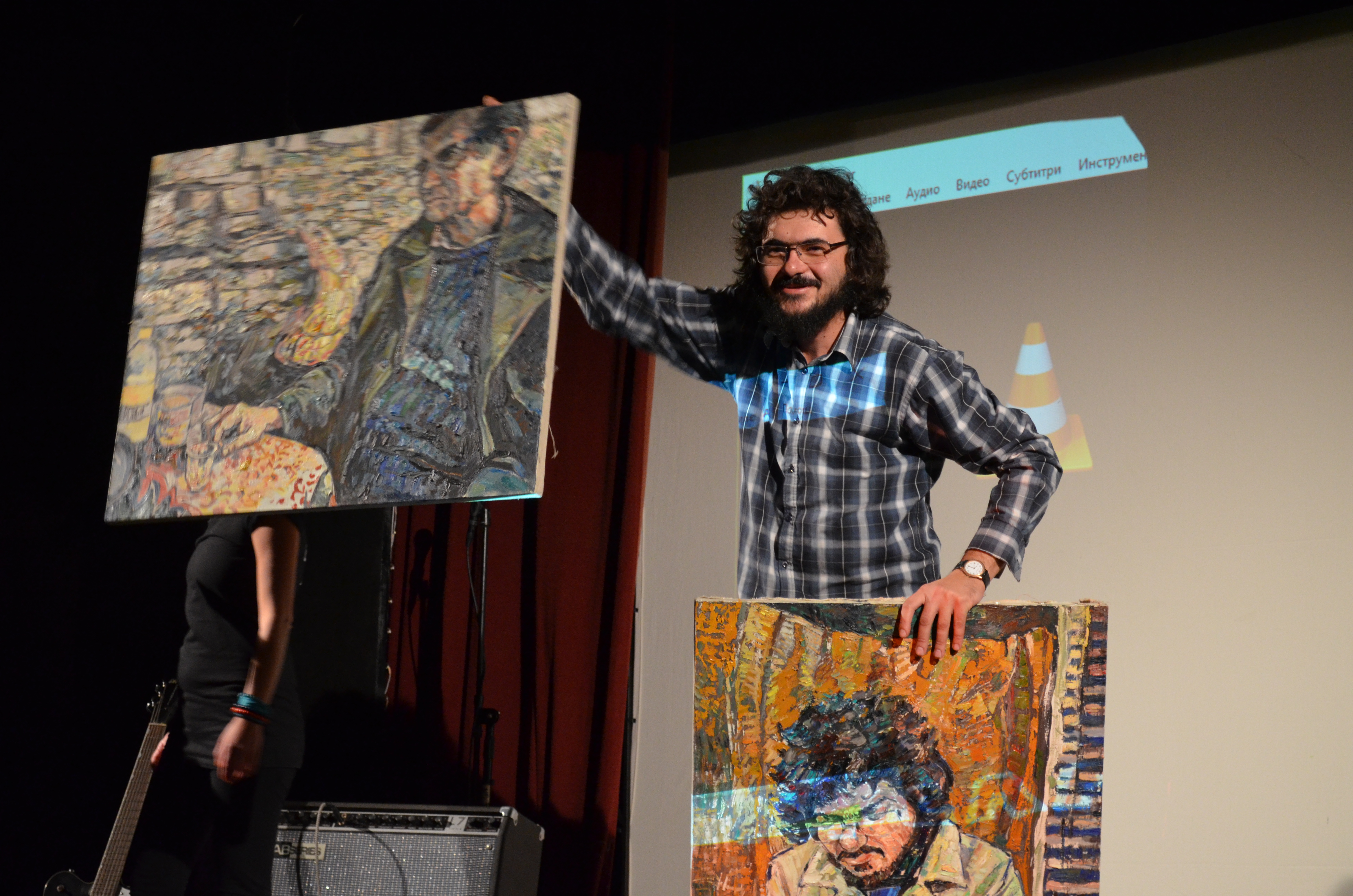
As part of ‘15 minutes of fame’ was a small exhibition staged in the lobby of the puppet theatre. Of the works included was Rodopska Beyonce (Autoethnography II) (2013) by Gery Georgieva: a short video in which the artist filmed herself re-enacting the choreography for Beyonce’s Single Ladies dressed in traditional Bulgarian costume. In the video, music has been replaced by the sound of the artist panting in the rough terrain, as she attempts a contemporary dance in a heavy traditional costume in unforgiving conditions. The work seems to be a metaphor for the drive required to express a sense of self through the total embodiment of all inheritances—natural, historical, cultural, and socio-political. In so many ways, the work sums up not only Night/Plovdiv, but also the sense of culture one feels here: ancient, modern, and contemporary, all at once. —[O]


